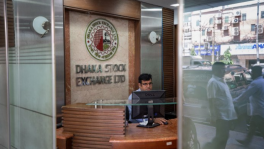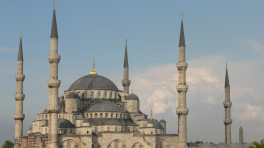India can recover from the recession. Here is a plan
Unveil a construction plan, develop a niche in exports, boost Indian brands, allocate another 2% of the GDP

The ~20 lakh crore package announced by the Indian Prime Minister (PM) Narendra Modi on May 12 will help energise the micro, small and medium enterprises (MSMEs) affected by the coronavirus disease (Covid-19) pandemic.
If the Centre and states would give them priority status, they can become viable, produce goods and create employment. The money provided by the government to revive industrial and business activity could generate a modest multiplier effect. But this does not mean that India can stave off a deep economic recession.
Whether and to what extent the government's efforts will succeed in attracting foreign companies exiting China to invest here remains to be seen. In the Shenzen cluster of China's Special Economic Zones (SEZs), companies were provided road, water and electricity infrastructure free of cost, and quick access to ports.
The government also built accommodations close to work sites for labour brought in from remote areas. Single-window clearances for projects were in 30 days or less.
The duty on exports was a flat 15%. Perhaps we could learn from Hanoi's success in attracting companies exiting China, but now, United States (US) President Donald Trump has thrown a spanner in the works by saying that exiting American companies must return to the US or face punishment.
The key to pulling the economy out of deep recession is to increase the multiplier effect — the speed at which money moves. The government must immediately initiate a huge programme involving new construction.
The construction sector uses a lot of labour and is a hub multiplier for other industries such as steel, cement and paints. It will increase the demand for goods and services, a primary factor in driving economic growth. The infusion of money through massive public works that helped end the recession of the 1930s is the only real parallel to the current crisis.
The Indian government building a new Parliament house, a large secretariat building and houses for the vice-president and the prime minister would be a good beginning to a new construction programme. Add to this, a centre of Indian arts and an iconic building to house a new national library on the lines of the American Congressional Library.
The construction of a large modern port each on the eastern and western coasts will fill an important need. The ongoing road-building programme could be expanded to include link-roads to nearby villages. Haryana should have a new capital: Chandigarh was built for Punjab. It is also time to begin work on some aspects of the river-linking plan.
The government must consider creating a dozen or more clusters of research and development (R&D) universities and specialist institutions to promote science and technology in different regions. Each cluster should comprise an advanced information technology institute, a telecommunication centre tasked to develop Indian 5G, a medical complex for research and development in pharmaceuticals, a skills training and upgrading institute, a business centre for demand promotion and a design R&D centre.
Roughly two-thirds of global trade was being conducted by multinational corporations (MNCs) via their own supply chains for resources and components, plus for direct final product entry into foreign markets.
In the post-Covid-19 global market, some of the western-based MNCs will shift their supply chains from China to other countries, or they may opt for development of resources and components in their own or neighbouring countries. A major example of such a policy has been the European Union Common Market Food Programme.
The global market is becoming increasingly competitive as more countries participate in producing and supplying goods and services.
Clearly, India has to develop global dominance in certain niche sectors in which our footprint is sustainable. India's exports are too diverse and lack a sustainable competitive advantage, and we must focus on developing clusters of excellence to support exports.
Lead countries have firms with a sustainable competitive advantage acquired through developing products suited to their culture and knowledge. For example, Germany and cars, France and perfume and wine, Italy and leather shoes.
We have to encourage the development of industries that can be upgraded for global markets such as gems/jewellery, pharmaceuticals and certain value-added agricultural products. We should make an effort to regain, with improved design and quality, at least a part of the textiles market.
Some small and medium-sized companies are born globals (BGs) ie, small and medium enterprises (SMEs) in western countries that grow globally at over 20% per year. They are founded by entrepreneurs with the vision to go global. Some have become sizeable enterprises relatively rapidly such as Austria's Red Bull and Finland's Angry Birds.
Many battleship MNCs are looking for such companies to use in their networks. Promising Indian startups should be advised and encouraged to learn from BGs.
Many Indian SMEs have a low price strategy. This is fundamentally unsound in the long-term as it tends to commoditise its offerings.
Advanced countries build brand equity for its country and firms. They treat brands as valuable assets. The consequent benefits of customer loyalty and rising profits strengthen their firms. With overproduction and international competition, a distinguishing factor is design. Customers are searching for better-designed products and are willing to pay more for them.
Witness the success of brands such as Armani, Polo, and Scandinavian/Danish wood furniture. India should set up a training programme for BGs which combines design, technology, commercialisation and internship.
The government should allocate 2% of the GDP for this (in addition to the 10% committed). This will set us on the path for the economy to emerge from a deep recession.
MK Rasgotra is a former foreign secretary and Vishnu Kirpalani is a distinguished professor emeritus, marketing and international business, John Molson School of Business, Montreal. The views expressed are personal.
Disclaimer: This article first appeared on Hindustan Times, and is published by special syndication arrangement.


 Keep updated, follow The Business Standard's Google news channel
Keep updated, follow The Business Standard's Google news channel














